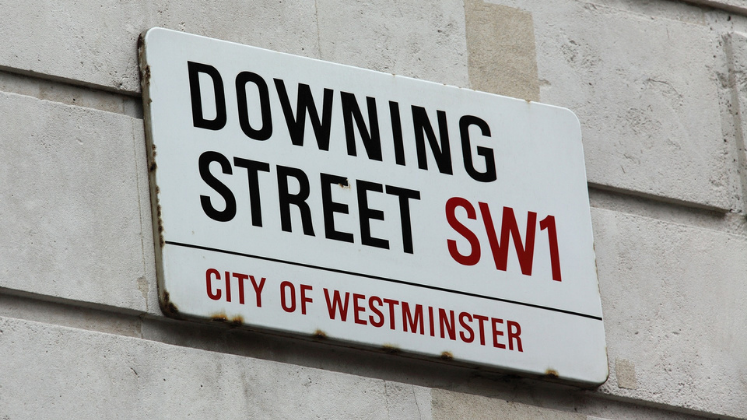The period immediately after World War II was a vital one for diplomatic relations and, with the Soviet Union emerging as a new superpower, it was particularly important for Britain’s relations with America. Britain and America After World War II is the first book to focus on the role of the British Embassy in Washington during this period. John Dumbrell finds the book is a model of intelligent and conscientious diplomatic historical research.
 Britain and America after World War II: Bilateral Relations and the Beginnings of the Cold War. By Richard Wevill. I. B. Tauris. May 2012.
Britain and America after World War II: Bilateral Relations and the Beginnings of the Cold War. By Richard Wevill. I. B. Tauris. May 2012.
In this very carefully researched study, Richard Wevill offers an account of the role played by the British Embassy in Washington in relation to US foreign policy in the early years of the Truman Presidency. The book covers the partial rupture of wartime US-UK cooperation, especially in relation to terms attached to the December 1945 loan agreement, policy towards Palestine, and (most seriously) the collapse of mutuality in the field of atomic energy.
The book goes on to discuss the role played by the Embassy in the Anglo-American convergence associated with the onset of Cold War thinking in Washington, especially in the context of the emerging Marshall Plan. In relation to the latter, Wevill highlights the cumulative impact of Embassy analyses of American thinking in formulating London’s response to Washington’s initiatives. The Embassy was also involved – as was the case in the so-called Pentagon and Modus Vivendi talks of 1947 – in direct negotiations with American policymakers, as well as exerting influence via more informal contacts.
At one level, Wevill is concerned to provide a document-based account of Embassy activities in his chosen period – a period which to some degree has been neglected, at least in comparison with the war years and with the ambassadorship of Oliver Franks, who succeeded Lord Inverchapel in May 1948. Wevill thus associates himself with the work of Michael Hopkins on Franks and the study of British ambassadors edited by Hopkins, John Kelly and John Young. A parallel forthcoming study, of US ambassadors to London, edited by Alison Holmes and Simon Rolfe, may also be mentioned here. Wevill presents his work as equally concerned with ‘the Embassy’ as with his two ambassadors (Lords Halifax and Inverchapel). The Embassy is seen as having decisive influence, often linked to the closeness of its personnel to key American political figures, as well as performing traditional roles of representation and negotiation. Attention is drawn to various diplomats associated with the Embassy, notably Roger Makins and his involvement in atomic diplomacy. However, the personalities of Halifax and Inverchapel do loom very large. Wevill is concerned with the latter part of the former’s ambassadorial term – Halifax served from 1941 to 1946 – and tends to step aside from controversies associated with Halifax’s earlier career. Noting that Halifax arrived in Washington, “with the whiff of appeasement about him” (p. 33), Wevill portrays Halifax as able to develop expertise and influence.
Australian-born Inverchapel (formerly Clark Kerr) emerges as an eccentric figure, composing reports with the aid of his quill pen. A reluctant public performer, Inverchapel did develop important elite contacts, some deriving from his earlier service in Washington under Ambassador James Bryce.
Wevill is clearly very sympathetic to the Embassy and (despite a few reservations) its heads. On the 1954 loan agreement, he sees the ‘professional’ Embassy, rather than the ‘amateur’ John Maynard Keynes as giving the superior advice and leadership (p. 107). However, Wevill also reveals the limits to Embassy influence. On Palestine, American policy tended to be made at the level of the White House and by people (such as David Niles) with whom the Embassy had virtually no formal contact. Inverchapel had good State Department links – despite some suspicion there of his perceived emotional pro-Zionism (p. 159) – but policy was often being made elsewhere. This story – of the Embassy being left stranded when policy is made outside ‘normal’ diplomatic channels – is a familiar one, and was replicated to some degree under President George W. Bush. Wevill also shows how the Embassy failed to identify key centres of American opposition to the continuation of atomic cooperation (p. 133).
This is an excellent book. It is written in the tradition of rather methodologically and conceptually conservative diplomatic history. There is no attempt here, for example, to use alliance theory to structure discussion of emerging US-UK power relations. Wevill might have developed his treatment of the Marshall Plan into a more sustained discussion of British influence in the emergence of elite American understandings of the early Cold War. A recent book by Marc Selverstone offers some pointers as to how this particular research agenda might be furthered. Wevill ploughs a fairly narrow, if very fertile, furrow. His self-denying ordinance in relation to Halifax is defensible in terms of time scale. However, it is a little disconcerting to find the Embassy work of Donald Maclean discussed at several points, with only a footnote to explain that no “attempt has been made to assess the extent of the damage he may have caused or to specifically relate his espionage activities to the role of the embassy” (p. 235). Maclean served not only as First Secretary in the Embassy Chancery, but also as Secretary of the Combined Policy Committee, concerned with US-UK atomic cooperation.
Wevill’s book is a model of intelligent and conscientious diplomatic historical research. It is recommended without reservation to all students of Anglo-American relations.
——————————————————————————–
John Dumbrell is Professor of Government at Durham University. He is the author of A Special Relationship: Anglo-American Relations from the Cold War to Iraq (London: Palgrave Macmillan, 2006). His latest book is Rethinking the Vietnam War (London: Palgrave Macmillan, 2012). Read more reviews by John.







